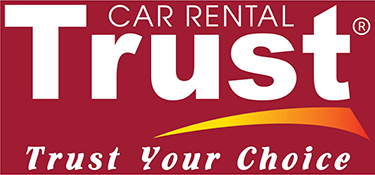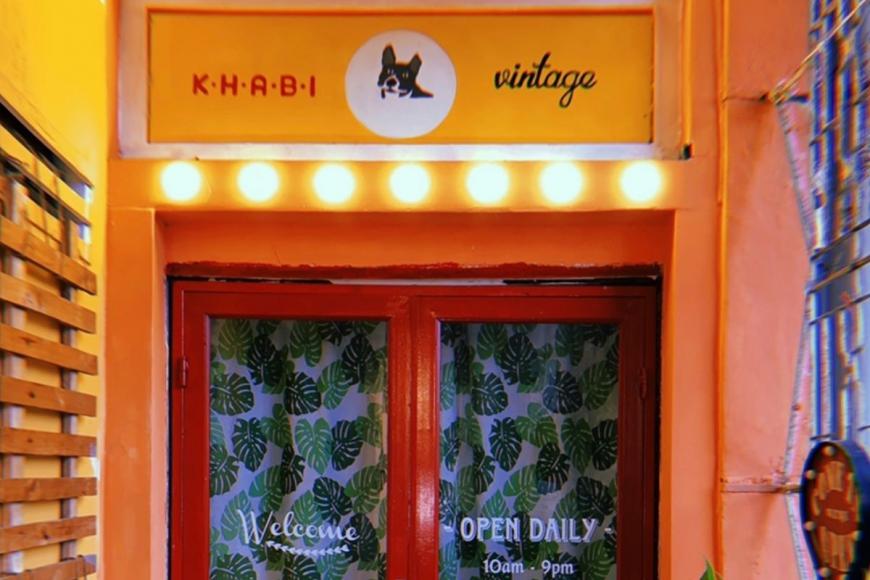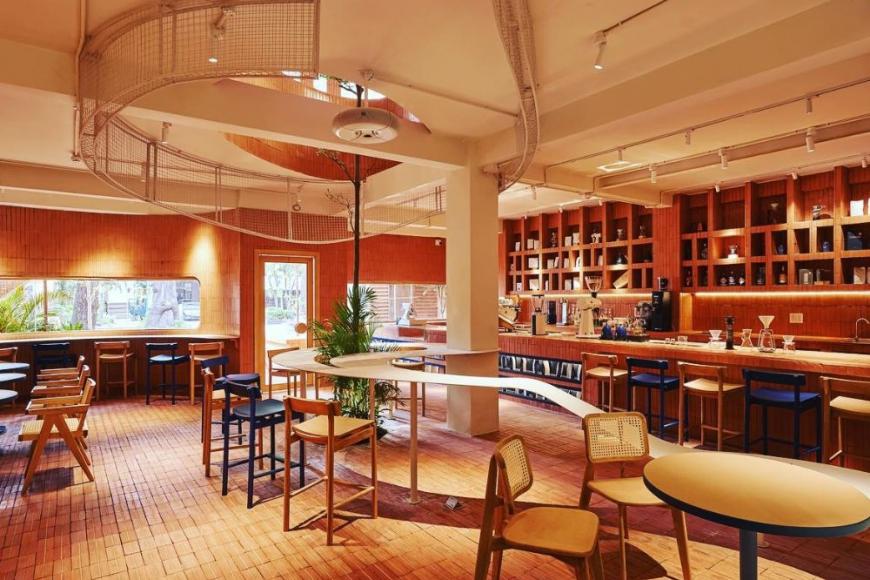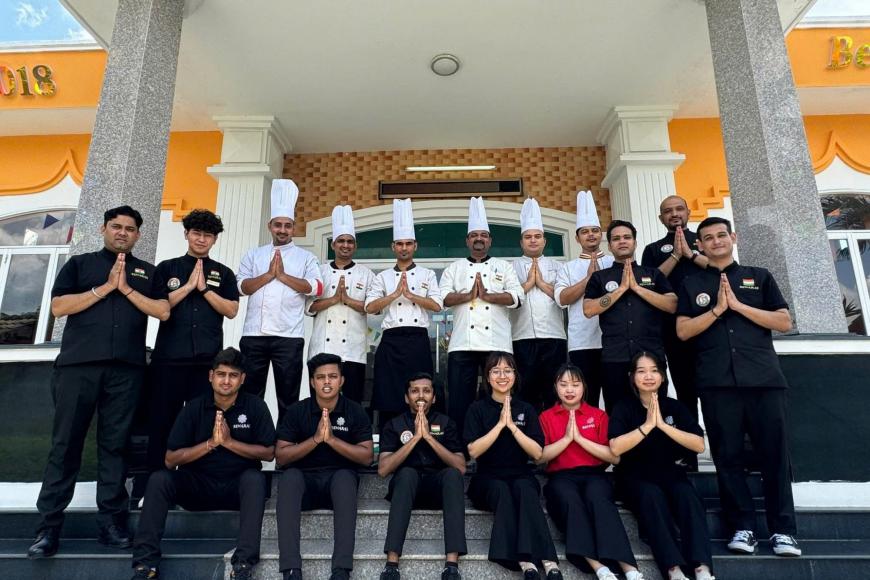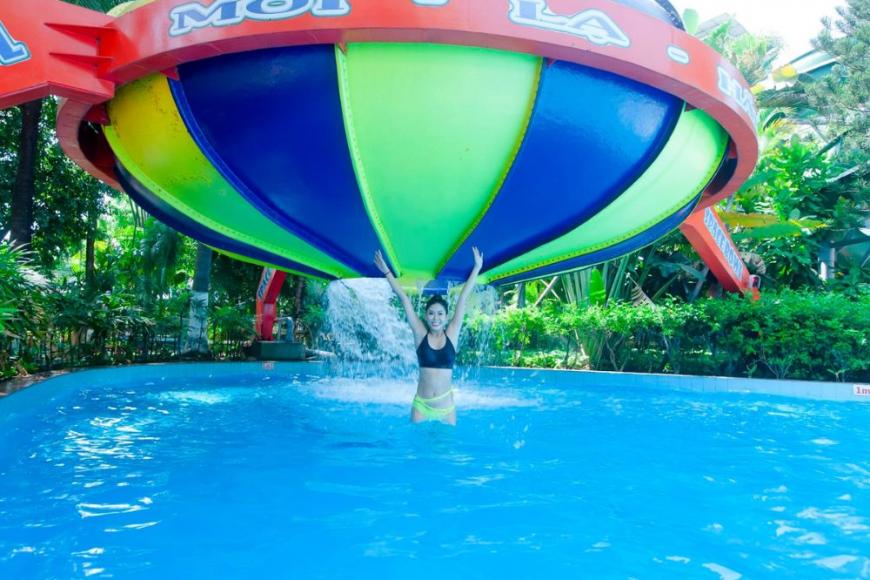- Nha Trang Travel Information
- Muine Travel Information
- Hue Travel information
- Cantho travel information
- Sapa travel information
- Ha Giang Travel Guide
- Ninh Binh Travel Information
- Quy Nhon Travel Information
- Vietnam Travel Information
- Hoian Travel Guide
- Vung Tau Travel Information
- Quang Binh Travel Information
- Phu Quoc Travel Information
- Ha Tinh Information
- Ca Mau information
- Quang Ninh Travel Information
- Tay Ninh Travel information
- Hoian travel guide
- Tien Giang travel guide
- Con Dao Travel information
- Ninh Thuan information
- Moc Chau information
- Danang Vietnam Travel Information
- Hanoi Travel Information
- Ho Chi Minh Travel Information
- Dalat Travel Information
The Independence Palace Saigon Vietnam
During the time that the Vietnam War was going on, President Nguyen Van Thieu of South Vietnam called the Independence Palace his home and his workplace. Because it has survived significant historical shifts in Saigon while preserving the core of Eastern cultural traditions, it was deemed worthy of preservation as a historical monument.
The Independence Palace is a symbol of not only victory and peace for Vietnam but also of the country's unbroken geographical integrity. This establishment flaunts a glitzy architectural style, an impressive number of rooms outfitted with opulent furniture and decorations, and an extensive, stunning outdoor area. It is the ideal destination for tourists looking to escape the sweltering heat of Southern Vietnam, take in some refreshingly cool air, and see one of the most spectacular monuments in Ho Chi Minh City.
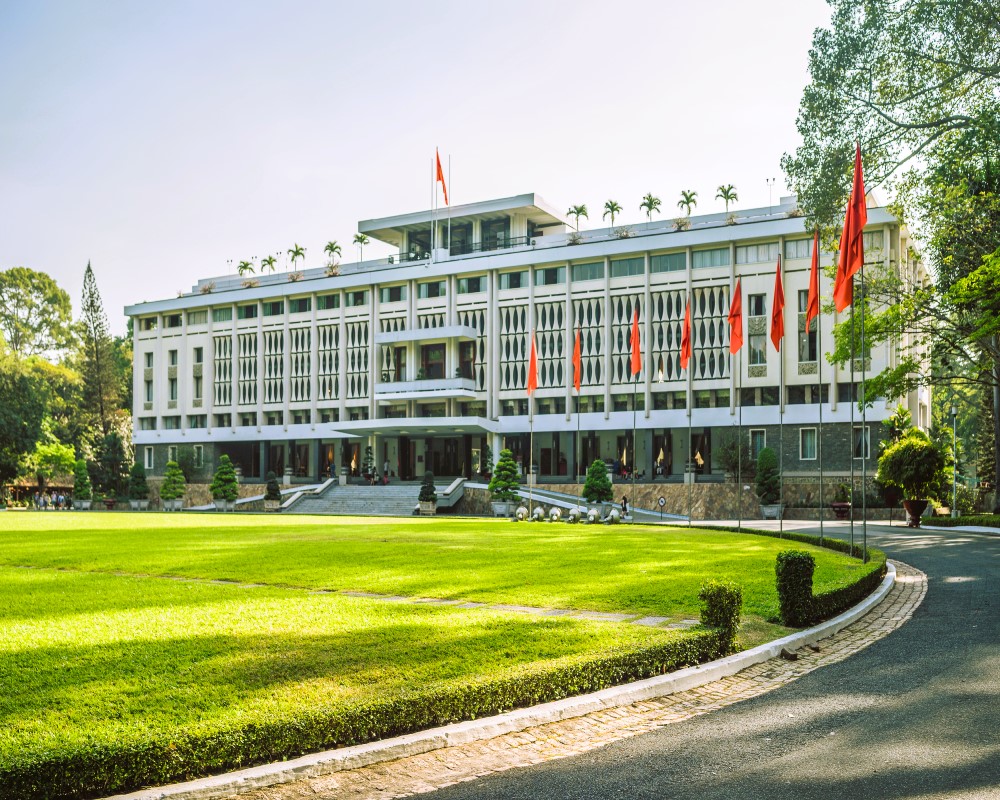
Where exactly is the Saigon Independence Palace located?
The Norodom Palace was demolished to make way for the Independence Palace's construction, also referred to as the Reunification Palace. It is a harmonic combination of modern architecture with traditional Vietnamese philosophy, oriental rituals, and the characteristics of the Vietnamese people. It represents the traditional philosophy, the characteristics of the Vietnamese people, and the oriental rituals.
The Palace, a prominent building in Ho Chi Minh City, spans an area of 120,000 square meters (300 meters by 400 meters). It is located next to four main streets: Nguyen Thi Minh Khai Street to the northwest, Nguyen Du Street to the southeast, and Nam Ky Khoi Nghia Street to the northeast. Huyen Tran Cong Chua Street also lies to the southwest of it.
Additionally, it is next to both 30-4 Park and Tao Dan Cultural Park, which are all located at the front of the property. The Palace grounds are home to many historic trees, many of which date back to the time of the French. This Palace is one of the most alluring sights in Ho Chi Minh City, particularly for individuals who appreciate art and architecture.
The Background of the Independence Palace Vietnam
The construction of Norodom Palace as a house for the Governor-General began in 1868, following the French's conquest of six provinces in South Vietnam (Cochinchine). The construction of the Palace took three years to complete. Between 1871 and 1887, the Palace was officially called the Governor's Palace since the French Governor of Cochinchine occupied it. Between 1887 and 1945, every Governor-General of French Indochina made use of the Palace as both their place of residence and business during the invasion of Indochina.
On March 9, 1945, Japanese soldiers successfully destroyed French rule in Indochina and seized complete control of the region. The Norodom Palace served as the Japanese administrative center in Vietnam during their occupation. The fall of Japan at the hands of the Allied forces in World War II allowed the French to retake Southern Vietnam and occupy it in September 1945. It was decided that the Norodom Palace would once more serve as the administrative center for French rule in Vietnam.
In May of 1954, the French were defeated in Dien Bien Phu, which forced them to sign the Geneva Agreements and pull their soldiers out of Vietnam. The United States of America entered the conflict to occupy the southern region. As a consequence of this, Vietnam was briefly split into two distinct areas: the north, which was governed by the Democratic Republic of Vietnam, and the south, which was governed by the recently proclaimed Republic of Vietnam, which was led by Ngo Dinh Diem and supported by the United States. The Norodom Palace was rechristened the Independence Palace, which later served as both the office and residence of Ngo Dinh Diem.
Read more: Best time to visit Ho Chi Minh Vietnam
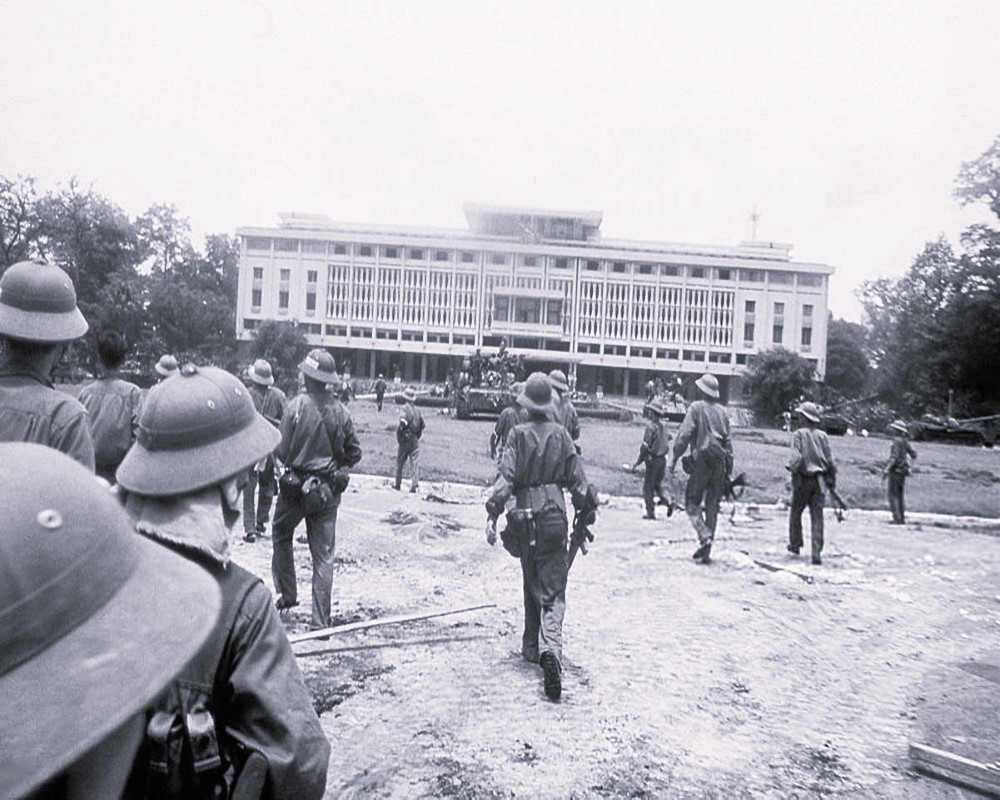 The Viet Cong entered the president Palace in Saigon Vietnam.
The Viet Cong entered the president Palace in Saigon Vietnam.The Palace was destroyed beyond repair by a bombardment carried out by rebels in February of 1962; thus, Ngo Dinh Diem ordered a new palace to be constructed. The Vietnamese architect Ngo Viet Thu was responsible for the design, and construction on the building didn't begin until 1962. Ngo Dinh Diem, however, did not live to witness the completion of the Palace because he and his brother were murdered in 1963, several years before the building was finally finished in 1966. After that, from 1967 to 1975, Nguyen Van Thieu called the brand-new Independence Palace his home and his job.
On April 30, 1975, two tanks belonging to the North Vietnamese Army burst through the Independence Palace walls, ultimately leading to the Republic's fall in Vietnam, the conclusion of the Vietnam War, and the reunification of the entire nation. This place has been called both the Independence Palace and the Reunification Palace throughout modern history in Vietnam.
Read more news about Saigon at our Ho Chi Minh travel information.
The architectural design of the Independence Palace
The Palace was constructed on a piece of land that is twelve hectares in size and features a big home that is eighty meters wide. Not only is the Palace well-known for its historical significance, but also its distinctive architecture. It is a seamless combination of the contemporary Western and the traditional Eastern styles.
The Outside
A circular lawn measuring 102 meters in circumference may be found in the front yard of the Palace. When guests enter the property, they will first notice the lush green grass, which immediately puts them in a more relaxed and revitalized state. The backyard features a lake that is shaped like a half-circle. The presence of lotus and water lilies in the lake gives it the appearance of the peaceful lakes that may be seen in the ancient pagodas and temples of Vietnam.
In both the foreground and the background of the Palace are two beautiful green parks. The primary structure consists of a basement, three levels above ground, two mezzanines, one ground floor, and one terrace. The entire space that may be utilized is 20,000 square meters, and it is broken up into 95 separate rooms.
Each room serves a distinct purpose and is designed and furnished following that function. After 1975, some of the spaces within the significant buildings have continued to be utilized, while the remainder are used to service visitors.
An old curving tile roof atop an octagonal mansion erected on top of a high hill and to the left of this Palace, facing Nguyen Thi Minh Khai Street, creating an atmosphere conducive to relaxation. The Palace is surrounded by verdant lawns, historic gardens, and priceless potted plants, and there are four tennis courts directly behind the central tower.
Internal Space
The dining room walls and the chamber used for cabinet meetings flank the hall on both sides, and there is an impressively substantial wooden staircase directly in front of the hall. This building contains a lot of space. It is light and has a minimalistic design.
In order to reach the Palace, guests are required to first go via the main gate and then walk the arced path that goes around the oval lawn. In addition to the breathtaking staircase and hall, each room of the Independence Palace is exquisitely designed and decorated uniquely.
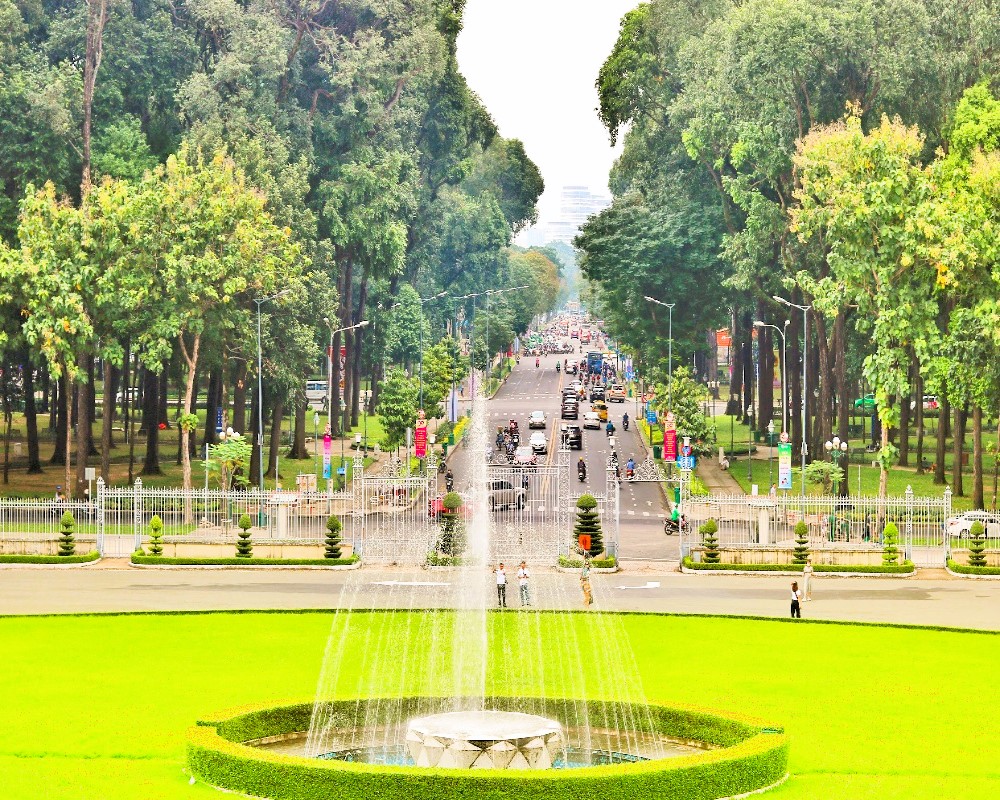 The President Palace from the Le Duan street in Ho Chi Minh city.
The President Palace from the Le Duan street in Ho Chi Minh city.The Chamber: This space has a capacity of more than 500 people and has been used for events such as meetings, banquets, and the inauguration of cabinets, among other things.
The most prominent item in the credentials room is a painting titled "Binh Ngo Dai Cao," which translates to "the Proclamation of Victory." It is comprised of forty different pieces, each of which illustrates the tranquil way of life in Vietnam during the 15th century.
This room was once used as a library and now houses the books and papers several prior presidents collected.
Room within the Strategic Operations Department: This is the room where the military data was collected from each of the four tactical regions. The soldiers would be responsible for maintaining, monitoring, and deploying military activities using this particular war map system.
The official home of the President and First Lady: The previous President of Vietnam, Nguyen Van Thieu, holds the record for the most extended time spent in this country (from October 1967 to April 21, 1975).
The basement is located beneath the Palace and was created by Lieutenant Colonel Engineer Phan Van Dien, the Chief of the Independence Palace. The length of the tunnel is 72.5 meters, while its width ranges from 0.8 to 22.5 meters, and its depth is between 0.6 and 2.5 meters. Narrow entrances, fortified walls, and ventilation systems connect the rooms in the basement.
There are a variety of additional rooms, such as the ballroom, the movie room, the reading room, and many others that will pique the guests' curiosity.
In addition, other portions that were previously closed are now welcoming guests, such as the Thematic area. It is a display place for images and historical articles from the past. In addition to perusing the vibrant photographs from the past, guests can gain a deeper understanding of the historical information concealed within the images.
The Independence Palace Saigon has a particular exhibition area with the caption "from Norodom Palace to Independence Palace, 1868 to 1966." This is a crucial point to make. The founding, building, significant historical milestones, and major events at the Independence Palace in Ho Chi Minh City, Vietnam, are all displayed in this museum, making it an exciting destination for history enthusiasts.
Things to do while visiting the Independence Palace City of Saigon
As soon as you step foot inside the Independence Palace, you will have an overwhelming sense of calmness due to the predominance of the color green throughout the entire structure. This structure has a basement with a network of tunnels, a war room, and a communications center. It is a five-story skyscraper.
Relics and artifacts from the past
The heroic past of Vietnam is memorialized through the historical treasures housed in the Independence Palace. The items have undergone meticulous preservation efforts and have been maintained in pristine shape so that guests can examine and appreciate them.
The legendary helicopter: An exhibit of President Nguyen Van Thieu's UH-1 helicopter may be found atop the Independence Palace, near where pilot Nguyen Thanh Trung dropped two bombs from his aircraft.
The Mercedes-Benz of Germany: The President of Vietnam, Nguyen Van Thieu, was often seen driving a Mercedes-Benz 200 W110 from Germany that bore the license plate number VN-13-78.
The Jeep M152A2 was the vehicle of choice for the Revolutionary Forces. It is one of a kind because it was used to take Mr. Duong Van Minh, the final President of the Republic of Vietnam, to the Saigon radio station on April 30, 1975, at noon, when he read the proclamation of capitulation. This gives it a special significance.
Artistic Creations
Not only does the Independence Palace feature historical items, but it also has several significant works of art on display. It is a part of being made the history of Ho Chi Minh City nowadays.
An oil painting of the Vietnamese countryside was drawn by architect Ngo Viet Thu, and it was executed as an oil painting. On the Ancestral Anniversary, also known as the Day of Tending Graves, the sisters Thuy Kieu and Thuy Van are shown in another oil painting meeting Kim Trong for the first time. This scene takes place on the Day of Tending Graves.
The Independence Palace contains many ancient Chinese jars and bowls that date back to the Ming and Qing periods.
Tanks Protecting the Independence Palace
A Russian model-843 tank made the initial attempt in April 1975 to tear down the gates of the Independence Palace. The tank was constructed in Russia. It was the model-390 tank that finally crushed the gate and advanced further into the Palace's central courtyard after it failed to knock down the gate.
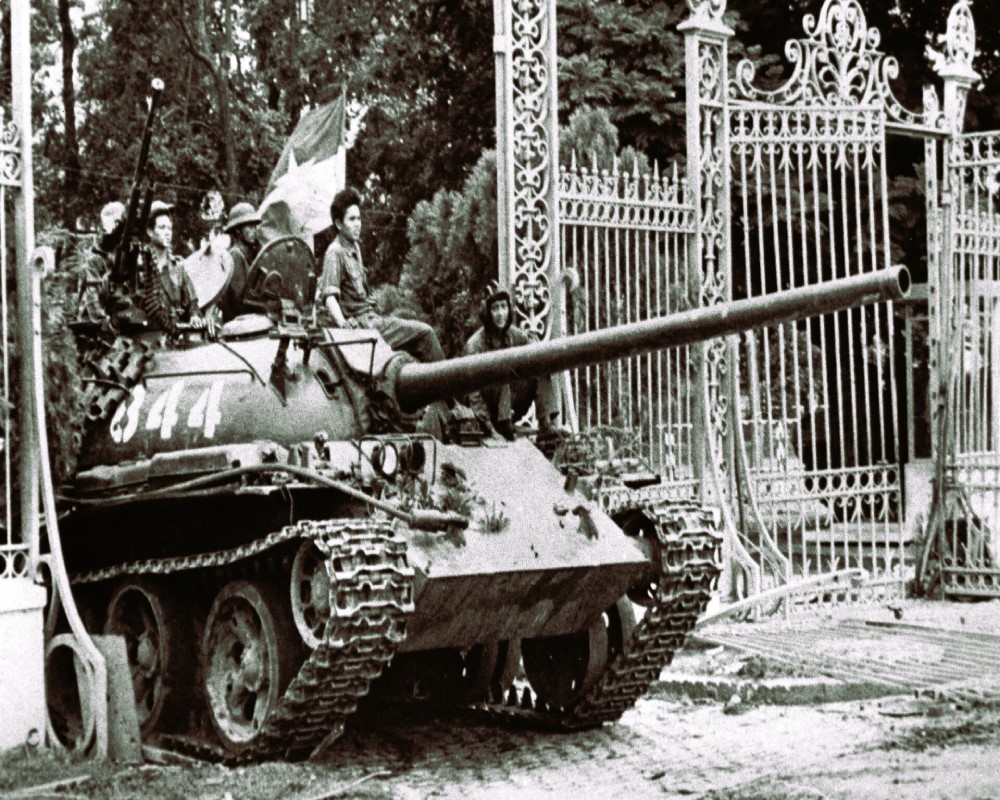
This significant historical event signified the successful conclusion of the lengthy revolutionary campaign led by Ho Chi Minh and the official reunification and independence of Vietnam. Both of the tanks currently on show in the yard of the Palace are copies of the original tanks on display in Hanoi.
A comprehensive travel guide for anyone interested in seeing Vietnam's Independence Palace
Directions to the Presidential Palace of Independence
Because it is located in District 1, the Independence Palace is accessible by various public transportation options, including taxis, cars, motorbikes, and buses. Visitors need to remember that the front gate of the building is situated such that it faces the intersection of Le Duan Street and Nam Ky Khoi Nghia Street. If you are still looking for the correct address, you should look for this intersection.
On foot, by motorcycle, or in a personal automobile: If you are traveling alone, whether by foot or by motorcycle, you should ask a local for instructions at some point. If you stay in a hotel in District 1, it will take you approximately 15 to 20 minutes on foot to reach the Independence Palace. It is important to note that parking is available at Tao Dan Park and along the side of the Palace (on Huyen Tran Cong Princess Street).
By taxi: If you don't want to waste time hunting for instructions, you may save time by taking a taxi and informing the driver that you want to go to the Independence Palace. Because the structure stands out among the other buildings that line the streets of Saigon, it is not difficult to spot.
Consider going with XANH SM Taxi (1900 2088) to make a better decision for the planet. XANH SM Taxi was the first taxi company in Vietnam to operate solely with electric vehicles and was exclusively comprised of VinFast vehicles. Customers who choose to take a cab from XANH SM not only benefit from the company's high level of service but also participate in XANH SM's efforts to lower the pollution caused by vehicles and protect the environment. Customers have four convenient options for making taxi reservations: primary and luxury taxi services, airport taxi services, and enticing specials.
Private driver: If you want to be comfortable for the trip, you can rent a driver and go wherever you want. You may save time and money if you have many places to visit throughout your journey. If you want to know more information about renting a private car, take a look at this reference: Ho Chi Minh car rental group tour 1 day or you can contact us via WhatsApp +84.934.189.301 to make a call and have your car immediately.
Hours of operation
The Independence Palace is open from 7:30 a.m. until 11 in the morning and from 1 in the afternoon until 4 in the evening, Monday through Sunday, including holidays and Tet. Between 11 a.m. and 1 p.m., the ticker office will be closed.
The cost of admission
The cost of admission for adults is 40,000 VND, while the cost for students is 20,000 VND, and the cost for children is 10,000 VND.
Please be aware that the type of entrance fee that applies to you may vary depending on the section or exhibition you choose to see.
Some crucial things to remember before going to the Independence Palace: He was Ho Chi Minh.
Because the Independence Palace is such an important historical location, you must behave appropriately while visiting the monument. If any visitors cause damage to the Palace, they will be held responsible for their actions.
- Dress formally and stay away from shorts and skirts if you can.
- During your visit, make sure to follow both the instructions given by the guard and the placards.
- When entering the monument, you are not permitted to bring in any luggage, food or drinks, animals, weapons, explosives, or poisonous chemicals.
- Take full responsibility for any destruction you make to the historical site.
In addition to being a heroic emblem of Ho Chi Minh City, the Independence Palace is the source of national pride for the Vietnamese people. Particularly for tourists from other countries interested in Vietnam's heroic past, exploring this historic location will be an experience that will live long in the memory. This location is an absolute must-see for everyone with a passing interest in history.
The information on Independence Place above of Ho Chi Minh car rental hopes to have helpful information for you.
other
Saigon Opera House is the perfect destination to enjoy interesting performances and explore unique architecture. With the Western European style, tourists feel that you are in poetic Paris without Saigon city. Don't miss out on an opportunity to visit the Opera House when you come to Ho Chi Minh.
Are you looking for a fashion store with affordable price in Ho Chi Minh? 14 Ton That Dam is the perfect choice for you. Vietnam Trust Car Rental offers some fashion stores at 14 Ton That Dam that you refer. Let's explore it.
Enjoying a cup of Vietnamese coffee is an interesting experience when you travel in Vietnam. Ho Chi Minh city is known for its unique cafe culture with many kinds of cafes from traditional to international blends. You can enjoy delicious cafes at coffee shops in Ho Chi Minh city. These shops offer good drinks and stunning virtual living space, allowing many beautiful photos on the social platform. Refer some best view cafe shops in Saigon in this guide.
Are you looking for the best Cu Chi Indian restaurants in Ho Chi Minh After exploring the Cu Chi Tunnel Tour by private car ? Experience the delicious lunch with your family and friends with the top 4 best Cu Chi Indian restaurants in Ho Chi Minh in this guide. Let’s explore it.
Dam Sen Water Park is one of the best things to visit in Ho Chi Minh. Tourists can play together with kids, friends and explore many entertainment activities here. Each year, Dam Sen Water Park welcomes a large number of local and foreign tourists coming to Ho Chi Minh and choosing a destination for visiting.
